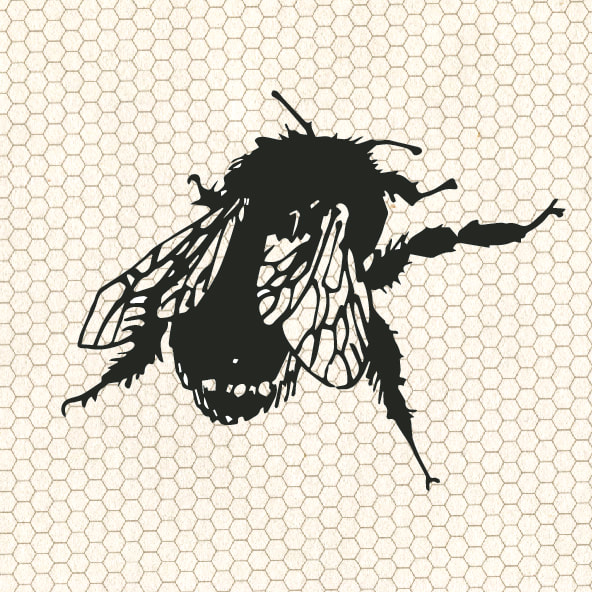Bombus Medley
|
What makes the bumblebee excited? How have bumblebees evolved and why do they wear a striped suit? And do you know what kind of habitats these busy pollinators thrive in? With this material, you get familiar with bumblebees, their evolution and interaction with plants. You will also learn about the communication and behaviour of bumblebees as well as the lifecycle of bumblebee colony. The material package includes five audio tapes and a visual art exercise. Listening to the tapes provides information about bumblebees and their ecology. In addition, you can use tapes to introduce broader topics of biological interactions such as function of animal colouration, communication, competition or evolution of co-operation, as a part of bigger phenomena-based education. Visual art exercise can be used for example in primary school art lessons. – – – – – – – – – –
1. Bombus audio walk Embark on a journey with the bumblebees. You can listen to tapes when walking outdoors or lying on grass - perhaps observing the bombus individual at work. The audio tracks fall under different aspects of Bombus life, and you can listen all of them in the order you prefer or choose only one of them that interests you the most. The total length of tracks is about 21 minutes. You can listen to the tracks as a playlist, or select them one by one from our page. You need a smartphone or other portable audio player, which you can connect online. The text version of the audio tracks can be downloaded here (pdf). If you want to prepare the Bombus walk for others with the help of these audio tracks, you can print A5-sized QR-code signs here (pdf) and attach them around an area, where you invite participants to walk. For reading the QR-signs, you need a QR-reader in your phone. In many phones this is already installed as basic function, but you can also download it from application stores when you search for ‘qr-reader’. When using the materials, please remember to mention us as original producer of the material. You can find our logo and Creative Commons -licence further down on this page. – – – – – – – – – – The audio tracks were part of Nature Concert Hall 2021 -event in Finland, whose main star was Tree bumblebee (Bombus hypnorum). Thank you Olli Loukola for commenting the scientific content of the tracks! * Bombus walk is also installed at Edible Park (environmental space for children and youth) in Helsinki, Mustikkamaa. Address: Mustikkamaanpolku 10, Helsinki. If you have any comments or questions about the trail, please contact us. – – – – – – – – – – |
By clicking the pictures below, you can listen to tapes 1 - 5, one at a time:
|
|
|
– – – – – – – – – –
2. Colours of the Cretaceous period Try implementing the theme to art lesson. We gathered instructions for an exercise, that deals with the colours of Cretaceous period landscape and the evolution of colourful flowers. More exercises: We also recommend our Plant-pollinator Interaction package for further studying of the same theme. – – – – – – – – – – |
|
|
|
– – – – – – – – – –
Main references and more information on the topic: Videos: * Nature: Bees learn football from their buddies. * Bumblebee Conservation Trust 2020. Evolution of bumblebees - Where did they come from? Books and articles: * Bumblebee Conservation Trust. * Clarke D., Whitney H., Sutton G. & Robert D. 2013. Detection and learning of floral electric fields by bumblebees. Science Vol 340 (6128): 66–69. https://science.sciencemag.org/content/340/6128/66 * Goulson Dave. 2013. A sting in the tale. * Hines H.M. 2008. Historical biogeography, divergence times, and diversification patterns of Bumble Bees (Hymenoptera: Apidae: Bombus). Syst. Biol. Vol 57(1): 58–75, https://doi.org/10.1080/10635150801898912. * Ings T.C., Raine N.E. & Chittka L. 2009. A population comparison of the strength and persistence of innate colour preference and learning speed in the bumblebee Bombus terrestris. Behav. Ecol. Sociobiol. Vol 63: 1207–1218, https://doi.org/10.1007/s00265-009-0731-8. * MaBouDi H., Barron A.B., Li S., Honkanen M., Loukola O.J., Peng F., Li W., Marshall J.A.R., Cope A., Vasilaki E. & Solvi C. 2021. Non-numerical strategies used by bees to solve numerical cognition tasks. Proc. R. Soc. B. Vol 288: 20202711, https://doi.org/10.1098/rspb.2020.2711 * Meyer-Rochow V.B. 2019. Eyes and vision of the bumblebee: a brief review on how bumblebees detect and perceive flowers. Journal of Apiculture Vol 34(2): 107–115, https://doi.org/10.17519/apiculture.2019.06.34.2.107 * Raine N.E., Ings T.C., Dornhaus A., Saleh N. & Chittka L. 2006. Adaptation, genetic drift, pleiotropy, and history in the evolution of bee foraging behavior. Advances in the Study of Behavior Vol 36: 305–354. https://doi.org/10.1016/S0065-3454(06)36007-X * Creative Commons and Public Domain licenced sound effects used in the audio tracks are listed in our Soundcloud page, under each of the tracks. – – – – – – – – – – |
|
– – – – – – – – – – Our materials are licensed under the Creative Commons Attribution-ShareAlike 4.0 International License: http://creativecommons.org/licenses/by-sa/4.0/. It means you can use our materials freely, but please remember to always credit our work and mention us whenever you are sharing contents of our project online: Instagram: @evolution_in_action, Facebook: @evoluutiopajat, Twitter: @EvoWorkshops. If you use our materials in teaching, we are happy to hear greetings and feedback. You can tag us on social media or send us an email: [email protected] Evolution in Action logo: jpeg, eps |












